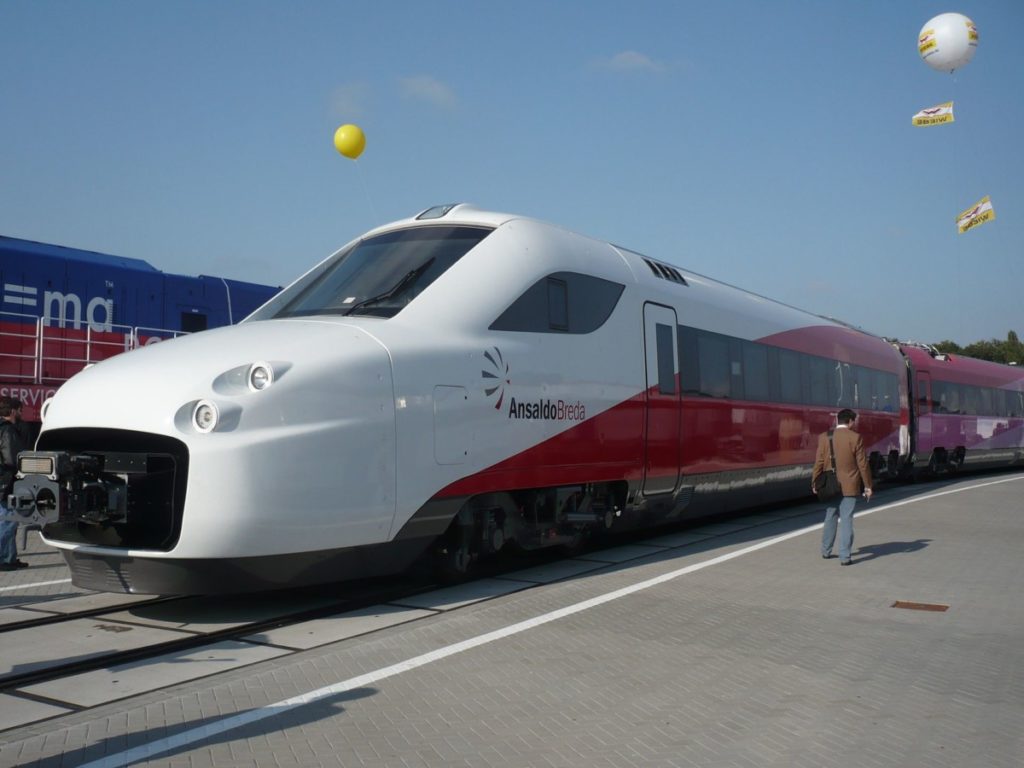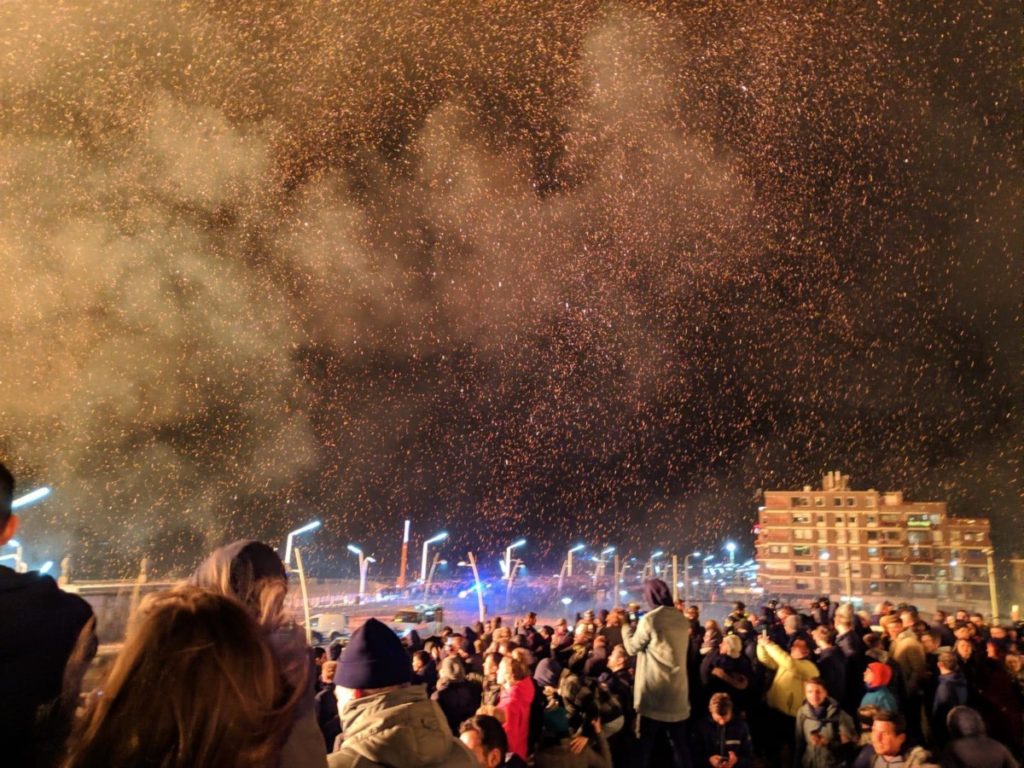Dutch fails — huh? It sometimes seems like the Dutch are good at everything they do. But, let’s cut to the chase. No one can be good at everything, right?
Let’s all nurse our own egos and have a look at some times the Dutch really missed the mark. 👇
7. When Den Haag paid €30,000 per squirrel to cross a road

Why was the Den Haag squirrel bridge a Dutch fail?
A whopping €150,000 went into building this not-so luxurious animal crossing, but no worries, because we’re saving cute, fluffy squirrels, right?
READ MORE | 7 odd Dutch quirks that show the stranger side of the Netherlands
Wrong. After only two years, CCTV evidence showed exactly five squirrels had made use of the bridge. That’s €30,000 per squirrel, a.k.a the most expensive squirrels ever.
The (then) Mayor of The Hague explained the money was used from a national fund for environmental compensation in an attempt to justify the expense.
Mate, we still think perhaps there could have been a better use for that cool €150,000.
6. The FYRA Fiasco
FYRA was, quite simply, a train that was going nowhere. When the general public starts alliterating in unison, you know something is a big deal.
The FYRA Fiasco was nothing less than a royal, giant stuff-up of epic proportions.

The Netherlands and Belgium touted FYRA as the future of travel between the two neighbours.
The Dutch government dropped a hefty €7 billion on the trains that should have travelled up to 300 kilometres an hour.
Let’s not forget this rail line already existed and had to be decommissioned for the project. They just wanted it to be faster.
Why was FYRA a Dutch fail?
The bottom line of the fiasco was that huge outlays eventually led to cost-cutting — on the trains themselves.
The (so-called) High Speed Alliance skimped out by purchasing slower trains from the cheapest bidder, a young Italian manufacturer. The Dutch love a bargain, right?
In the weeks after the line opened, a huge amount of the trains were cancelled or significantly delayed.
Within just four months of service, the trains were revealed to have water leaking inside, erosion and rust after travelling just a few kilometres (no joke), brakes that were only compatible up to 160 kilometres an hour, and batteries catching on fire.
That’s quite a list of grievances!
5. The Scheveningen Bonfire that went up in flames
This Scheveningen Bonfire started out like every other celebration of the annual New Years event. By the end of the night? It was literally raining fire.

New Year’s 2018 was the fateful night for the scheduled fireworks and a 48-metre tall bonfire. Thousands turned out in droves on bikes and cars to watch.
Why was the 2018 Scheveningen Bonfire a Dutch fail?
The organisers realised the wind was too strong and blowing in the wrong direction as soon as the bonfire was lit.
But, alas, it was too late. Huge embers began raining down on people, police began evacuating the crowd, and the event turned into chaos.
Fire engines were called to put out embers that had fallen on surrounding buildings, bikes were burnt, cars melted, and houses were damaged.
A night supposed to fill the crowd with warmth quickly turned into a hell’s living room. Thankfully, no one was hurt.
READ MORE | How Dutch people get rid of their Christmas trees
If the plan was to build a tornado of fire and cause huge amounts of damage, congratulations, it was a success! But, we’re pretty happy with calling this a pretty big ol’ Dutch fail.
4. When ‘gender equality’ didn’t extend to toilet time
I’m calling it, guys. The worst thing about the Netherlands is paying to pee. Why do I have to pay 50 cents to take a whizz? 75 cents? It’s robbery.
But what makes it worse is that guys have the luxury of whipping it out whenever they need to pee.
READ MORE | I had to pay €4 to use a toilet on King’s Day — and I’m pissed
The municipalities even encourage it with the free-standing pee stations that sit propped up on corners.

Yet, for a country that ranks number four in the EU’s Gender Equality Index, the Netherlands sure doesn’t accommodate girls that gotta go.
While women may not possess the necessary equipment to pee standing up, that shouldn’t disadvantage them from riding the complimentary public urination train.
Why was female public urination a Dutch fail?
This dilemma ended up in the Dutch court system after Geerte Piening, 23, received a €90 fine after popping a squat in an alleyway after a night of drinking.
When she fought the fine, a (male) judge told her she should have used a public urinal. You know, the ones engineered for men?
3. The €2.1 million mosaic — that flew too close to the market
Vredenburg is one of Utrecht’s most recognisable town squares, in the main shopping area of the city.
READ MORE | 19 unmissable things to do in Utrecht in 2025
The municipality attempted to update the area in 2019 with a new mosaic that covered the square.

A design with a homage to classic market items was eventually chosen after a public vote: a fish, a leek, a croissant, an olive and a button. Cute, right? Well, no.
Why was the Utrecht Mosaic a Dutch fail?
There’s the story of Icarus, who flew too close to the sun. This is the story of a mosaic, that flew too close to the market.
Workers painstakingly laid 490,000 tiles in accordance with the artist’s plans. The long-awaited result? The market icons were virtually unrecognisable.
People simply couldn’t tell what they were looking at when on ground level — it just looked like a mishmash of tiles.
The market (that the tiles honoured) made the situation worse.
With markets come dirt, grime, and fishy-water. The featured tiles began to blend in with the surroundings under this delicious cocktail of mess.
The municipality of Utrecht washed away the coating, only for it to return. They attempted fancy polishes to bring out the colours and resist the dirt, but it was futile.
In the end, the mosaic was simply a mistake — and required cleaning five times a year.
2. The metro that made the houses sink
Amsterdam’s increasing congestion problems were set to be solved by the Amsterdam Zuid-Noord line. The line was always forecast to be a difficult engineering feat — and an expensive one.
Construction started in 2002 and was expected to take nine years and cost €1.46 billion. In reality, it ended up taking fifteen years and costing €3.1 billion. Youch.
Why was the Amsterdam Zuid-Noord line a Dutch fail?
But the worst of it wasn’t the huge cost blowout and time delay. Turns out Amsterdam’s precarious historical underground was a less-than-stable foundation for the new metro line.
The result? Houses built above it literally began to fall into the earth.
In 2008, a leak in the concrete walls caused water to inject into the metro line and collapse the ground underneath the Vijzelgracht.
People inside their houses were sitting down to dinner when they began hearing strange creaks and groans.
After running outside, they saw their houses were sagging. Some dropped 25cm into the ground.
Residents were forced from their homes, and even after the line opened ten years later, most of the buildings were still empty. Yeeesh!
That didn’t quite work out the way Amsterdam thought it would!
1. When the government accidentally employed radicalised Muslims to work with Islamic youth
The city of The Hague created an outreach program for Islamic youth, which hired youth workers to help integrate the children into the Netherlands and to identify any signs of radicalism.

Why was the Islamic youth outreach program a Dutch fail?
These workers received a three-day training course paid for by the National Counter-terrorism Coordinator.
After the training, at least five youth workers with Moroccan roots ‘came out’ as Salafist — an ultra-conservative form of Islam.
One of the workers had ties with jihadists, may have been sending money over, and may have been in contact with recruiters.
Perfect role models for trying to integrate Islamic youth into the Netherlands, right?
Got a story of a Dutch fail that we missed? Let us know in the comments below!




I am Dutch and this is spot-on! Regarding political issues: we are good at being politically correct, but forget to see that politically correct is not correct and will fail in the end. We are also Calvinist, meaning we are bloody good at telling others how to behave…..
I think the saddest Fail is the Metro construction that has damaged and ruined the houses on the canal. The worst part is that the contract was given to a foreign company who really did not know how to build in the soil of Holland’s canal district.
You missed out on retroactively canceling the 30% ruling after people moved their families and made financial commitments based on their agreed term instead of making it for future agreements with new expats.
What a fun read. I heard that AMS considered halting the NZ metro line after the homes sank, but they would have owed the gov’t a zillion euros, so they carried on.
I live in Noord, so I’m really glad they finished it!
It’s probably typical for ex-pats to start noticing the “chinks in the armor” of their new homes. But… what a remarkable country this is.
Ik ben eeuwig dankbaar dat ik uit Amerika ben en zo gelukkig dat ik in Nederland woon.